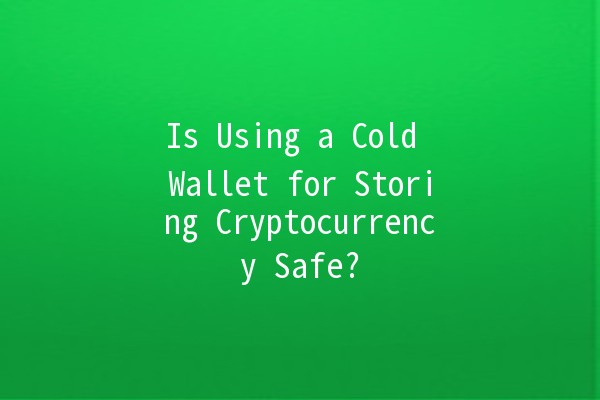




Cryptocurrency, with its increasing popularity and value, has raised questions about the safe storage of digital assets. Many investors are turning to cold wallets as a solution for safeguarding their cryptocurrencies. But how secure are these wallets, and what best practices should users follow? This article will dive deep into the safety of cold wallets, providing valuable insights, practical tips, and best practices for using them effectively.
Before discussing safety, it’s essential to understand what a cold wallet is. A cold wallet refers to any cryptocurrency wallet that is not connected to the internet, making it less vulnerable to hacking compared to hot wallets, which are online wallets. Cold wallets can take various forms, including:
Cold wallets are increasingly popular for longterm storage due to their robust security features.
Enhanced Security: By storing keys offline, cold wallets are less susceptible to online threats.

Control Over Assets: Users have full ownership and control of their private keys.
LongTerm Storage: Ideal for holding assets without the risk of everyday trading.
While cold wallets offer better security than hot wallets, they are not completely foolproof. Here are some potential risks and considerations:
Physical Theft: Hardware wallets can be stolen if not stored securely.
User Error: Losing access to your private keys or mismanaging a paper wallet can result in loss of funds.
Malware Risks: If a compromised device is used to access a wallet, this risk increases.
When selecting a hardware wallet, ensure that you choose a reputable brand. Research user reviews, check for regular firmware updates, and ensure that the company has a history of strong security practices.
Example: Ledger and Trezor are among the leading hardware wallet providers, known for their security and userfriendly features.
When setting up a cold wallet, you are often given a recovery seed (a series of words). This seed is crucial for recovering your wallet if the device becomes lost or damaged.
Store it Offline: Write the seed on paper and store it in a safe place, such as a safety deposit box or a fireproof safe.
Avoid Digital Copies: Do not store the recovery seed on digital devices that can be hacked.
Wallet providers frequently release updates to improve security and features. Regularly updating your wallet ensures you benefit from these improvements.
Example: Ledger offers firmware updates that enhance security protocols. Users should check their devices for updates periodically.
For any associated accounts, create a strong password. If your wallet is connected to software or has an online component, enable twofactor authentication (2FA) for an added layer of security.
Example: If your hardware wallet is linked to a software wallet, enable 2FA on that software, ensuring that even if your login credentials are compromised, your assets remain secure.
Phishing attacks are prevalent in the crypto world, attempting to trick users into giving away private keys or recovery phrases. Always verify the legitimacy of communications and only access wallet interfaces through the official website or application.
Example: An email claiming to be from your hardware wallet provider may contain a link to a phishing site. Always navigate to the official site manually.
While cold wallets are safer than online wallets, they are not immune to all risks, such as physical theft or user error.
Cold wallets are beneficial for anyone holding cryptocurrency, regardless of the amount. Even small amounts of crypto can justify the use of a cold wallet due to the potential risks involved.
If a user loses their private keys or recovery seed, recovery of funds is often impossible. Always ensure these details are backed up and secured properly.
The most secure cold wallets are generally hardware wallets. They offer physical protection and encryption, significantly mitigating risks of theft compared to paper wallets, which can be lost or damaged easily.
To ensure security, keep the wallet updated, store your recovery seed offline, and be wary of connecting the wallet to potential malwareinfected devices. Regularly check the wallet’s official site for security notifications.
Yes, you can transfer funds from your cold wallet back to a hot wallet whenever needed. Ensure you take the necessary precautions while performing the transfer.
If you lose your hardware wallet, you may be able to recover your funds using the recovery seed. However, if both the wallet and the seed are lost, accessing your cryptocurrency will be impossible.
Yes, most hardware wallets support multiple cryptocurrencies. Check the wallet’s specifications to see the range of supported assets.
Generally, if your wallet is secure, checking it periodically is sufficient. However, you should regularly verify its security settings and ensure the latest firmware is installed to protect your assets effectively.
By following the practices outlined in this article, you can significantly enhance the security of your cryptocurrency holdings. Whether you are a novice or an experienced investor, understanding the dynamics of cold wallets will empower you to make informed decisions regarding your digital assets.